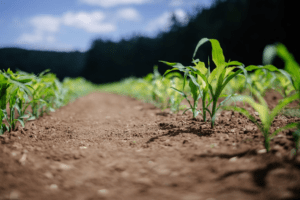
The agriculture industry is vital to the world economy, as it provides food, fuel, and fiber for billions of people. However, farmers face many challenges when trying to produce crops. They must contend with pests, diseases, and unfavorable weather conditions. They also need to find ways to increase yield without using excessive amounts of water or fertilizer. Fortunately, there are many ways to increase crop yield effectively.
In this article, we will explore six easy ways for farmers to increase their yield. We will discuss each method in-depth, and provide tips on how to implement them successfully. So whether you are a small-scale farmer or a large-scale commercial grower, read on to learn how you can increase your yield with ease.
Use Bird Repellent
Birds can be a major pest in agriculture, as they can damage crops and spread diseases. To protect your crops from birds, you can use bird repellent. Bird repellent is a substance that deters birds from entering an area. It can be applied to seedlings, plants, and fruits. Some common bird repellents include netting, scarecrows, and reflective tape. And if you are growing corn, there are now many innovative corn seed treatment options that can help to repel birds that damage corn crops. You can find these products at your local agricultural supply store. When using corn bird repellent, be sure to follow the manufacturer’s instructions carefully. And if you are not using a corn-specific product, always test the repellent on a small area of the crop before applying it to the entire plant.
Use Cover Crops
One simple way to improve your yield is to use cover crops. Cover crops are plants that are grown between main crop cycles to improve soil health and reduce erosion. They can also help to control weeds and pests, and improve water infiltration and retention. Some common options include legumes, grasses, and brassicas. You can also mix and match different cover crops to create a custom blend that will best suit your farm. When choosing cover crops, it is important to consider your climate and soil type. You will also need to decide how long you want the cover crop to grow, as some varieties must be harvested before they go to seed. Once you have selected the right cover crop for your farm, you can simply sow the seeds in between your main crop cycles.
Use Fertilizers
Fertilizers are another great way to increase your yield. By adding nutrients to the soil, you can encourage plants to grow more vigorously and produce more fruit or vegetables. However, it is important to use fertilizers correctly, as too much can damage plants and reduce yields. It is also important to choose the right fertilizer for your crops and soil type. Some common types of fertilizer include manure, compost, and inorganic chemicals. You can also find organic fertilizers made from plant or animal waste. When using fertilizers, be sure to follow the manufacturer’s instructions carefully. Apply them at the recommended rate and time of year, and always water them well after application.
Use Mulch
Mulch is a material that is spread over the surface of the soil to improve moisture retention and reduce weed growth. It can also help to regulate soil temperature and protect plants from harsh weather conditions. Some common types of mulch include straw, wood chips, and leaves. You can also find synthetic mulches made from plastic or fabric. When using mulch, be sure to apply it at the recommended depth and frequency. You will also need to remove it after a certain period, as it will eventually decompose and add nutrients to the soil. If you are using organic mulch, you can simply till it into the soil when you are ready to remove it.
Irrigate Wisely
Irrigation is a critical part of agriculture, as it provides plants with the water they need to survive and thrive. However, irrigation can also be a major contributor to water waste. To use irrigation wisely, choose an efficient system that will deliver the right amount of water to your crops without over-watering. You will also need to consider your climate and soil type when choosing an irrigation system. If you live in a dry climate, consider installing drip irrigation or soaker hoses. These systems deliver water directly to the roots of plants, which reduces evaporation and ensures that your crops receive the water they need. If you have sandy soil, you may need to water more frequently than if you have clay soil.
Use Companion Planting
Companion planting is a method of growing different crops together to improve yields. This practice can help to improve nutrient availability, pest control, and water retention. Some common companions for crops include other plants, animals, and fungi. When choosing companion plants, it is important to consider the needs of your crops. For example, legumes such as beans can help to improve the nitrogen content of the soil. Meanwhile, pest-repelling plants such as marigolds can help to protect your crops from insect damage. You can also use companion planting to attract helpful insects such as bees, which pollinate flowers and improve yields.

As you can see, there are many ways that farmers can increase yields and produce healthier crops. By following these tips, you can improve the quality of your crops and increase your chances of success. Just remember to always test new products and techniques on a small scale before applying them to your entire crop. And if you have any questions, be sure to consult with a local expert. With a little planning and effort, you can achieve great results in the field.


































